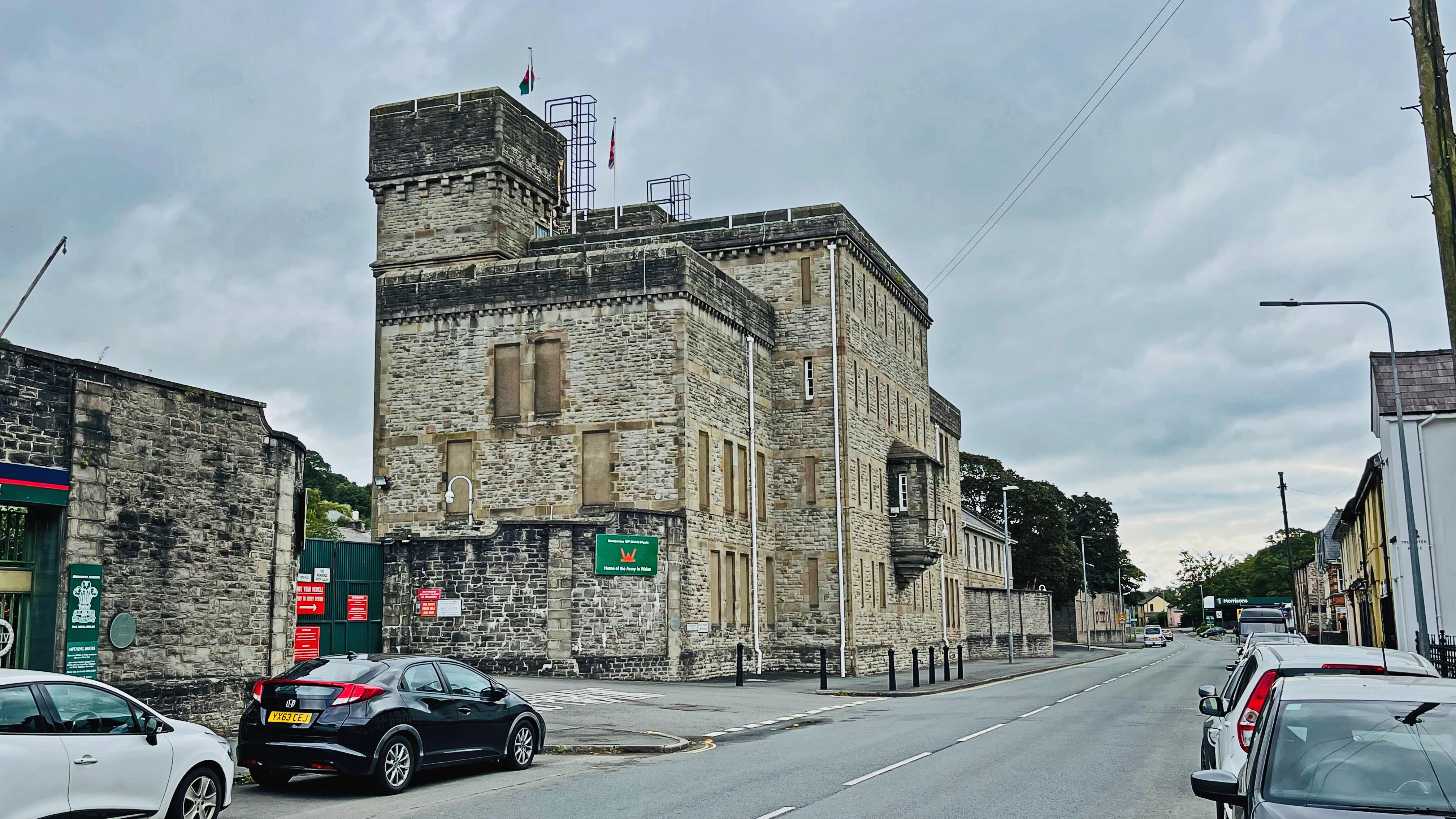
Visit the historic Canal, Theatr Brycheiniog, the Barracks & Museum of the Royal Welsh. This is the 10th stop in WALK: The Brecon Story, our heritage trail around Brecon.
Theatr Brycheiniog & Canal
We head across the Captain’s Walk, down the slope and along Canal Road, On the left, in the builders’ yard once stood busy canal wharfs and a saw pit with a brewery beyond (on the Watton). On the right, the town slaughter houses and up ahead, the current head of the canal. Today it is a beautiful and tranquil place to sit and rest - or to take a boat journey down the Usk Valley. But wind back the clock to the start of the 19th century and it would have been very different. The canal arrived in town in December 1800 with the first barge load of coal arriving on Christmas Eve that year. It was started as the Brecon and Abergavenny Canal and was connected to the Monmouthshire Canal in 1812, allowing travel from this spot and down to Newport and the sea. It was designed to bring in cheap coal and lime - and to take goods such as iron down to Newport for export. But it quickly opened up many other trades: forestry, building materials, farm produce, beers, wines and many other delights. Farms and even grand houses were often advertised during the 19th century giving their distance from the canal.
Alongside the canal stands Theatr Brycheiniog, a good place for a cuppa, some food and maybe a show. The building was erected near the site of the town’s Georgian racecourse in 1997. But it represents a history of theatre in Brecon going back to at least 1699. Samuel Owsley’s diary explains that actors staged shows at the ‘Great House’ in Wheat Street between 16th December 1699 and 15th January 1700. In the early days the larger rooms of pubs were often used as we’ve read of the Bell Inn near the start of our tour. In 1787, John Boles Watson opened Brecon’s first purpose built theatre. We’ll visit that shortly.
Carrying on along the canal towpath, we pass Gasworks House marking an industry that came to the town in 1822. Beyond, the double bridge going back over the canal reminds us that tramways - carriages pulled by horse also ran into town bringing good from the surrounding countryside. A bit further along this bank stand the Lime Kilns which were big users of the canal system As we turn back and cross the bridge by the Morrisons garage the house to our right, Tollgate House, marked the spot where travellers would have to pay per person and per animal to use the public highway, heading out to Hay-on-Wye and Abergavenny.
Royal Welsh Regimental Museum & Barracks
Heading back into town along The Wotton we pass the Brecon Barracks and Regimental Museum on the right hand side. The red bricked building which now houses the museum was designed to store arms and ammunition. That included, by 1813, racks for 15,000 muskets and bayonets plus 1,500 swords. Later it was used as a barracks for 270 men. From here, soldiers were sent to put down the Merthyr riots in 1831 and Chartist protests in Llanidloes and Newport in 1839. They also tackled some of the ‘Rebecca Riots’ in which toll gates across mid and West Wales were destroyed. Now the Royal Welsh Museum houses some 33,000 objects from the 1680s to modern times.
The more substantial barracks complex followed in the 1870s. It is a rare survival of its kind and still very much in use by the army. Note the mock ‘arrow slits’ and windows in the front wall to the right of the main entrance. They were apparently blocked up around 1960 as the building was prepared as a possible Cold War headquarters. Look if you can across the parade ground. In more peaceful times, in the 1880s, a ‘lawn tennis ground’ stood where cars now park.
https://royalwelshmuseum.wales/
The Watton and Peace Garden
Continuing along the Watton, several of the larger buildings were once pubs. A map of 1834 shows ten of them on this one road. Today, a few still operate. The Blue Boar, on the corner of Gasworks Lane is now home to the Brecon Rugby Club - a founding member of the Welsh Rugby Union with the first recorded match involving a Brecon team going back to 1868. Further up, alongside the Peace Garden stood Brecon’s first purpose-built theatre opened in 1787 and continued until 1871. Opposite is Free Street - so called because medieval traders here were outside the medieval town walls and therefore ‘free’ of the fees and rules set within. Heading back up past the old Assize Courts we are back in the Bulwark and High Street where our journey began.
This is part of our WALK: The Brecon Story heritage trail. Click here to access the Google Earth map or go back to the beginning of the trail
